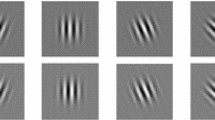Abstract
In this paper, we propose a new directional multi-resolution ridgelet network (DMRN) based on the ridgelet frame theory, which uses the ridgelet as the activation function in a hidden layer. For the multi-resolution properties of the ridgelet function in the direction besides scale and position, DMRN has great capabilities in catching essential features of direction-rich data. It proves to be able to approximate any multivariate function in a more stable and efficient way, and optimal in approximating functions with spatial inhomogeneities. Besides, using binary ridgelet frame as the mathematical foundation in its construction, DMRN is more flexible with a simple structure. The construction and the learning algorithm of DMRN are given. Its approximation capacity and approximation rate are also analyzed in detail. Possibilities of applications to regression and recognition are included to demonstrate its superiority to other methods and feasibility in practice. Both theory analysis and simulation results prove its high efficiency.
Similar content being viewed by others
References
McCulloch W S, Pitts W. A logical calculus of the ideas immanent in nervous activity. Bulletin of Mathematical Biophysics, 1943, 5: 115–133
Park J, Sandberg I W. Universal approximation using radial-basis-function networks. Neural Computation, 1991, 3(2):246–257
Zhang Q, Benveniste A. Wavelet networks. IEEE Transactions on Neural Networks, 1992, 3(6): 889–898
Hubel DH, Wiesel TN. Receptive fields, binocular interaction and functional architecture in the cat’s visual cortex. The Journal of Physiology, 1962, 160: 106–154
Candès E J. Harmonic analysis of neural networks. Applied and Computational Harmonic Analysis, 1999, 6(2): 197–218
Donoho D L. Tight frames of k-plane ridgelets and the problem of representing objects that are smooth away from d-dimensional singularities. In: Proceedings of the National Academy of Sciences, USA, 1999, 96(5): 1828–1833
Candès E J, Donoho D L. Ridgelets: a key to higher-dimensional intermittency? Philosophical Transactions of the Royal Society of London Series A, 1999, 357(1760):2495–2509
Starck J L, Candès E J, Donoho D L. The curvelet transform for image denoising. IEEE Transactions on Image Processing, 2002, 11(6): 670–684
Grochenig K. Acceleration of the Frame Algorithm. IEEE Transactions on Signal Processing, 1993, 41(12): 3331–3340
Candès E J. Ridgelet: theory and applications. Dissertation for the Doctoral Degree. CA: Stanford University, 1998
Daubechies I. The wavelet transform: time-frequency localization and signal analysis. IEEE Transactions on Information Theory, 1990, 36(5): 961–1005
Donoho D L. Orthonormal ridgelets and linear singularities. SIAM Journal on Mathematical Analysis, 2000, 31(5): 1062–1099
Do M N, Vetterli M. The finite ridgelet transform for image representation. IEEE Transactions on Image Processing, 2003, 12(1): 16–28
Lin W, Kovvali N, Carin L. Ridgelet-based implementation of multi-resolution time domain. IEEE Transactions on Antennas and Propagation, 2005, 53(8): 2688–2699
Hou B, Liu F, Jiao L C. Linear feature detection based on ridgelet. Science in China (Series E), 2003, 46(2): 141–152
Yang S Y, Jiao L C, Wang M. An adaptive ridgelet neural network model. Journal of **dian University, 2005, 32(6):890–894 (in Chinese)
Author information
Authors and Affiliations
Corresponding author
Additional information
__________
Translated from Journal of **dian University, 2006, 33(4): 557–562 [译自: 西安电子科技大学学报(自然科学版)]
About this article
Cite this article
Yang, S., Jiao, L. & Wang, M. A new directional multi-resolution ridgelet network. Front. Electr. Electron. Eng. Ch 3, 198–203 (2008). https://doi.org/10.1007/s11460-008-0026-2
Published:
Issue Date:
DOI: https://doi.org/10.1007/s11460-008-0026-2




